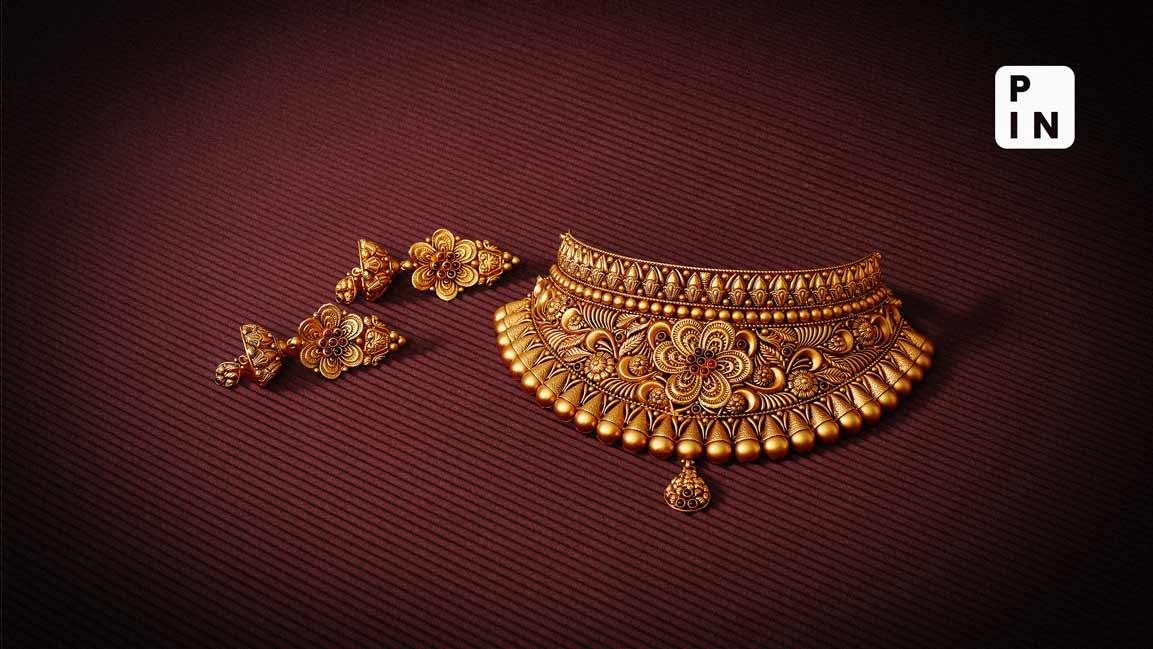- | 1:00 pm
Gold’s glitter shines through as 2023’s wedding season draws to a close
Bridal jewelry holds on despite surging gold prices, and emerging rivalry from platinum and fads such as foreign destination weddings

The wedding season for this year in India, the second largest consumer of gold jewelry, is drawing to a close.
The Confederation of All India Traders (CAIT), Traders’ lobby in October estimated that about 3.5 million weddings would be held in India between 23 November and 15 December, with Indians splurging ₹4.25 trillion during the period.
A significant portion of this spending is expected to be on gold, a staple in Indian wedding celebrations.
Gold is deeply embedded in Indian culture, linked to religious beliefs, traditions, and festivals. Bridal jewelry, accounting for 50-55% of the gold market, is predominant, with weddings and festivals being the main occasions for gold purchases. India, in the absence of official records, is estimated to host 11-13 million weddings annually.
Despite the traditional nature of India’s gold demand, consumer behaviour over recent years has been changing.
22-carat gold vs 18-carat gold
Plain gold jewelry constitutes 80-85% of market share, gold industry lobby World Gold Council (WGC) said in its latest report, the majority of which is 22-carat, although the market for 18-carat jewelry is growing.
22-carat gold contains 22 parts of gold out of a total of 24, making it 91.67% pure gold. The remaining two parts are made of other metals such as silver, zinc, or copper. This blend makes the gold durable enough for jewelry while maintaining a high level of purity. 22-carat gold is highly valued in jewelry, especially in many Asian cultures, and is traditionally used for making intricate jewelry pieces.
18-carat gold, on the other hand, consists of 18 parts of gold and 6 parts of other metals, translating to 75% gold purity. The additional metals in the alloy make 18-carat gold jewelry more durable and resistant to scratches when compared with higher carat gold. This makes it more suitable for everyday wear and for settings with precious stones.
Demand for bridal jewelry
Considering the average marriage age in India is 22 and over half of the population is under 25, the demand for bridal jewelry is expected to stay strong, WGC said in the report, adding that the jewelry’s significance in India is also due to its role as a woman’s personal asset and a form of financial security.
Across India, regional tastes in gold jewelry vary widely. While studded jewelry such as polki, kundan, or jadau commands a 15-20% market share nationwide, it’s notably more popular in Northern India. People in Southern India generally prefer plain gold pieces, with 60-70% featuring diamonds and 30-40% adorned with precious or semi-precious stones, WGC said in the report.
While polki utilizes uncut diamonds set in gold, kundan features intricately crafted gold foiling with gems, and jadau involves embedding precious stones into molten gold for ornate designs.
To be sure, the Indian government relaxed certain rules on hallmarking–official marking or stamping on gold jewelry that certifies the purity of the metal–in March, making it easier for traditional jewelry styles such as kundan, polki, and jadau to be sold abroad.
Whatever be the differences in regional tastes, gold’s glitter shines through.
“Despite – or perhaps because of – macroeconomic uncertainties, India’s population resolutely turns to gold,” Juan Carlos Artigas, global head of research at WGC, wrote in the report, titled, India’s Gold Market: Reform and Growth.
“Weddings and festivals are key drivers of gold demand and the country is one of the world’s largest bar and coin markets. Gold retains prominence in the social and financial life of many Indians, both urban and rural,” Artigas wrote.
Discussions over the years between leading independent precious metals consultancy Metals Focus and retail jewellers have shown that weddings remain the key motive for buying gold in India.
Bridal jewelry remains the dominant consumption segment, with about 55% market share by weight, despite rising domestic gold prices over the past decade and stiff competition from other luxury purchases, such as destination weddings and foreign holidays.
“Indian consumers traditionally accumulate gold over a period of time, which is converted into jewelry at a later date; weddings, for example,” Ashish Pethe, partner at Mumbai-based Waman Hari Pethe Jewellers, said.
The shift to alternatives
Gold jewelry manufacturers, meanwhile, are increasingly shifting towards creating lightweight designs to appeal to younger customers who prefer everyday gold jewelry that complements their Western-style clothing.
While silver jewelry is gaining popularity due to climbing gold prices, and platinum is emerging in men’s jewelry, neither has the cultural importance or aspirational appeal of gold, thus posing minimal competition, WGC said.
Young urban grooms in India are increasingly opting for platinum jewelry amid soaring gold prices, The Economic Times reported last month.
Gold prices are currently hovering around the ₹62,500 mark for 10 gm of 24k variety, while platinum is around ₹25,000 for 10 gm.
India saw a 23% year-on-year growth in platinum jewelry sales on a sustained marketing push that helped increase sales and promote platinum over gold and diamond options, industry lobby Platinum Guild International said in a recent report.
Seasonal gold import
The rupee gold price has almost doubled since 2012, encouraging manufacturers gradually to shift towards lighter weight pieces, but bridal jewelry has been relatively price inelastic, losing only around 5-10% market share in that time.
Government data last month showed that gold imports in the month of October, ahead of Diwali which fell in November this year, almost doubled to $7.2 billion.
“The import of gold has risen by 90% to over $7 billion in value. This increase in gold imports may lead to a boost in jewelry exports in the coming months,” Federation of Indian Export Organizations president A. Sakthivel said last month, implying that more gold available in the country could mean more raw material for jewelry makers, potentially increasing the production and export of gold jewelry.
Looking to the future, Artigas of WGC noted that regulation of India’s jewelry industry has effectively built up consumer trust.
“Broadening the export horizons beyond the usual five countries (UAE, US, Hong Kong, Singapore, UK) could stabilize the jewelry market. Accessible banking options can lure investors who recognize gold’s safety amid diverse choices but, in time, efforts such as the Gold Monetisation Scheme, mining sector reforms, and resolving recycling traceability may lessen reliance on gold imports,” Artigas said.












